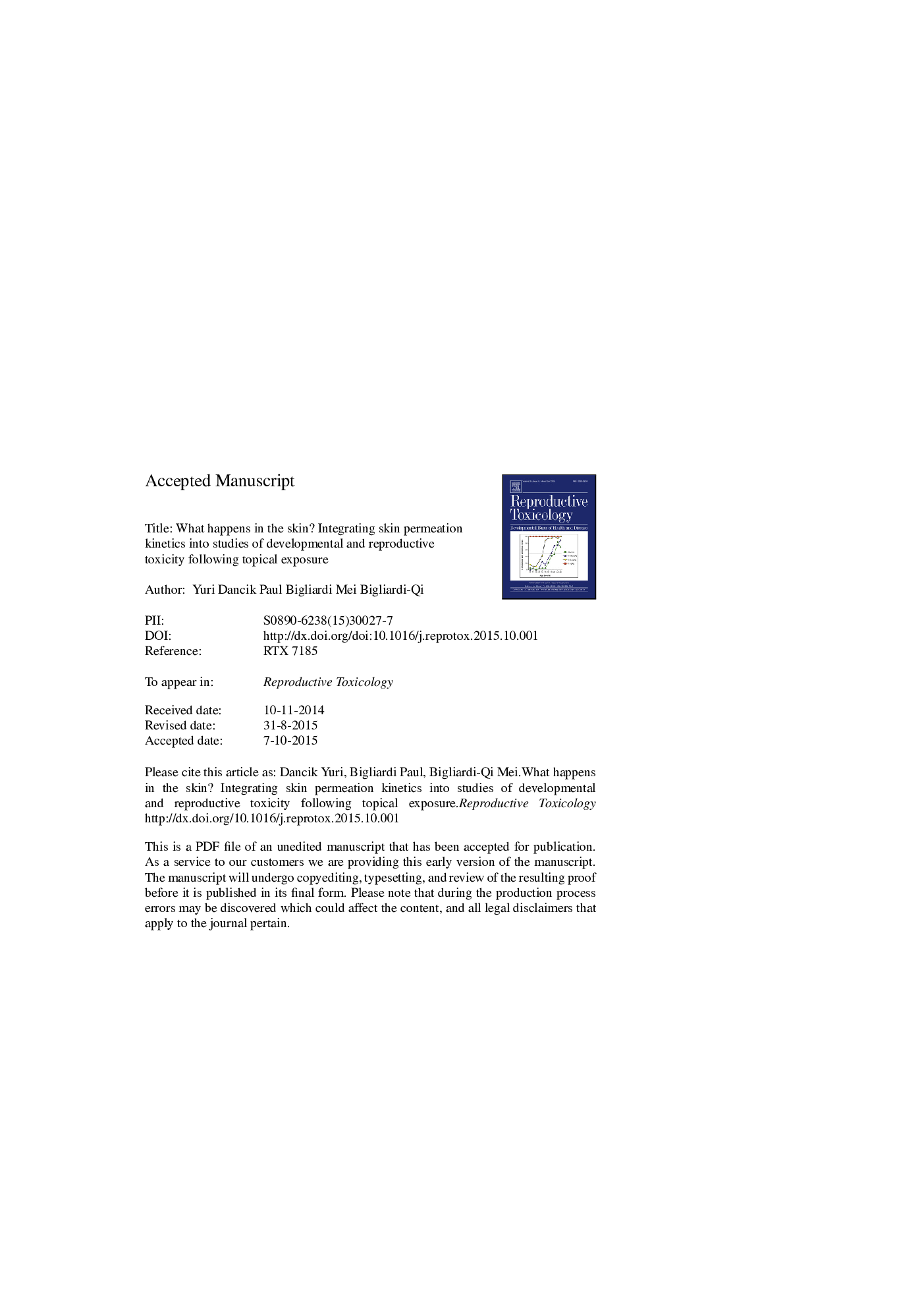| Article ID | Journal | Published Year | Pages | File Type |
|---|---|---|---|---|
| 5858083 | Reproductive Toxicology | 2015 | 96 Pages |
Abstract
Animal-based developmental and reproductive toxicological studies involving skin exposure rarely incorporate information on skin permeation kinetics. For practical reasons, animal studies cannot investigate the many factors which can affect human skin permeation and systemic uptake kinetics in real-life scenarios. Traditional route-to-route extrapolation is based on the same types of experiments and requires assumptions regarding route similarity. Pharmacokinetic modeling based on skin physiology and structure is the most efficient way to incorporate the variety of intrinsic skin and exposure-dependent parameters occurring in clinical and occupational settings into one framework. Physiologically-based pharmacokinetic models enable the integration of available in vivo, in vitro and in silico data to quantitatively predict the kinetics of uptake at the site of interest, as needed for 21st century toxicology and risk assessment. As demonstrated herein, proper interpretation and integration of these data is a multidisciplinary endeavor requiring toxicological, risk assessment, mathematical, pharmaceutical, biological and dermatological expertise.
Keywords
LOAELDEETPEACSOMPAdichlorodiphenyltrichloroethaneBPAPBPKCOMBUPOMATEWLPhenylethyl alcohol2-phenoxyethanoltBuMSKNMPOccupational toxicology2-MEN,N-diethyl-meta-toluamideDiglycidyl ether of bisphenol AN-methyldiethanolamineExtrapolation factorMDEAN-MethylpyrrolidoneTGADMFMEANO(A)ELSLSDEALASHmb2-Methoxyethanol2-Ethoxyethanol2-ethylhexanol2-Hydroxy-4-methoxybenzophenone4-MBCAUCEthylene glycolTransepidermal water lossThioglycolic acidBisphenol ATretinoinDaediethanolaminedimethylformamideDDTRelative humidityAlternative methodssodium lauryl sulphategestational ageExposure scenarioTREFormaldehydephysiologically-based pharmacokineticDermal exposureStratum corneumMethyl ethyl ketone peroxideMethyl salicylatearea under the curveMonoethanolamineSkin penetrationEGBEno observed (adverse) effect levelSTBpolyethylene glycolPEGCaPLowest observed adverse effect level
Related Topics
Life Sciences
Environmental Science
Health, Toxicology and Mutagenesis
Authors
Yuri Dancik, Paul L. Bigliardi, Mei Bigliardi-Qi,
